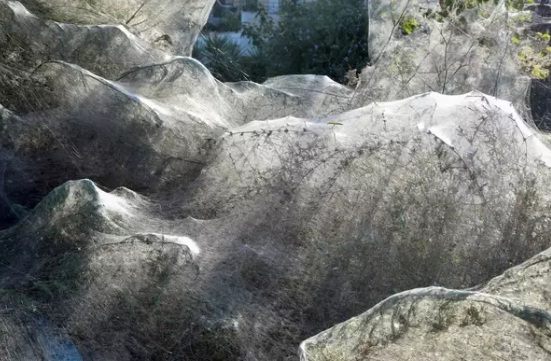
An event very similar to a Hollywood horror movie is terrifying Greek nationals as a vast spider web measuring more than 1000 feet has draped the whole eastern side of a lagoon in Aitoloko. Even though gigantic spider webs are spun by Tetragnatha spiders during the mating season each year, increased humidity and temperature this year has contributed to such a gigantic web, which can be literally called a 'spider party' along the Little Venice of Greece.
Experts believe that an increase in the number of mosquitoes in the area has also played a crucial role in the creation of this gigantic spider web. As per experts, spiders are fond of eating mosquitoes, and this has made them weave their nests in such a giant manner in the midst of mating.
Eyewitnesses reveal that the giant spider web has completely smothered plants and palm trees along the shoreline.
As the giant web started scaring local residents, Maria Chatzaki, professor of molecular biology and genetics at the Democritus University of Thrace revealed that these spiders are not dangerous for humans, and it will not cause any damage to the flora in the area.
"It's as if the spiders are taking advantage of these conditions and are having a kind of a party. They mate, they reproduce and provide a whole new generation. These spiders are not dangerous for humans and will not cause any damage to the area's flora. The spiders will have their party and will soon die," said Maria, Newsit.gr reports.
Fotis Pergantis, president of the Messolonghi National Lagoon Park revealed that the increased number of gnats in the area is the main reason behind the giant spider web. Gnats are basically small mosquito-like insects, and they usually spent their time for reproduction, as they have a lifespan of just two or three days. As the number of gnats increases, spiders consider it as a feast, and they start draping the area with the web to catch their prey.








